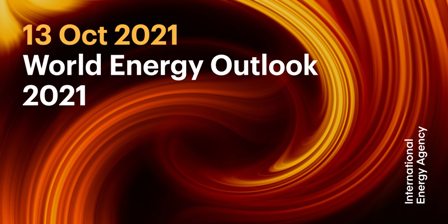
IEA’s World Energy Outlook 2021 is out
The World Energy Outlook 2021 (WEO-2021), the latest edition of our annual flagship publication, has just been released. It shows that a new energy economy is emerging around the world as solar, wind, electric vehicles and other low-carbon technologies flourish. But as the pivotal moment of the COP26 Climate Change Conference approaches, the WEO-2021 makes it clear that this clean energy progress is still far too slow to put global emissions into sustained decline towards net zero, highlighting the need for an unmistakeable signal of ambition and action from government leaders at COP26.
Even though the growth of clean energy technologies provides reasons for optimism, the world is still far from a path that would give us a good chance of limiting global warming to 1.5 °C and avoiding the worst effects of climate change. Instead, global consumption of coal and oil is growing strongly this year, pushing carbon dioxide (CO2) emissions towards their second largest annual increase in history.
This Outlook takes into consideration the full diversity of country circumstances, resources, technologies and potential policy choices in its examination of the scenario projections. Countries are not starting this journey from the same place. Many developing economies, in particular, are facing a continued public health crisis and the impacts of the Covid-19 pandemic on their economies and energy sectors will be felt for years to come. By contrast, more rapid progress with mass vaccination campaigns leaves most advanced economies and the People’s Republic of China (hereafter China) with a clearer near-term pathway to recovery, though many uncertainties and risks remain.
A new energy economy is emerging
There are unmistakeable signs of change. In 2020, even as economies sank under the weight of Covid-19 lockdowns, additions of renewable sources of energy such as wind and solar PV increased at their fastest rate in two decades, and electric vehicle sales set new records. A new energy economy is coming into view, ushered forward by policy action, technology innovation and the increasing urgency of the need to tackle climate change. There is no guarantee that the emergence of this new energy economy will be smooth, and it is not coming forward quickly enough to avoid severe impacts from a changing climate. But it is already clear that tomorrow’s energy economy promises to be quite different from the one we have today.
Electricity is taking on an ever-more central role in the lives of consumers and, for an increasing number of households, it promises to become the energy source on which they rely for all their everyday needs: mobility, cooking, lighting, heating and cooling. The reliability and affordability of electricity is set to become even more critical to all aspects of people’s lives and well-being.
Information Source: Read More
Oilandgaspress.com | Energy, Climate, Renewable, Wind, Biomass, Sustainability, Oil Price, LPG, Solar
Please use our attached online form.
Submit your Releases or contact us now!
Follow us: @OilAndGasPress on Twitter | OilAndGasPress on Facebook

